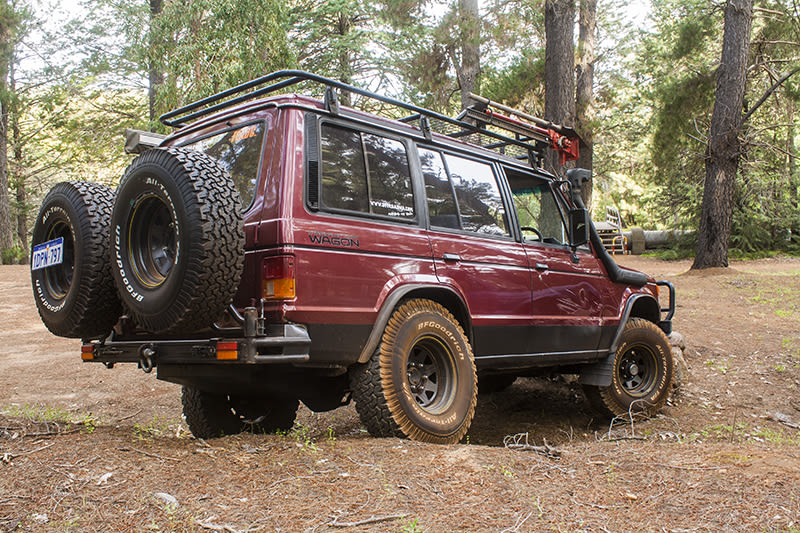After reading this article by MrTheEngineer:EarthRoamer, I realized that more specific examples may help eager new overlanders learn more about the lifestyle sport activity.
Wheelbase, Approach, Break-over, and Departure Angles
Generally speaking, approach, break-over, and departure angles should be about 30 degrees or higher. Any of these angles less than 30, and you have a higher possibility of tearing off/denting your bumper or scraping your undercarriage. Longer wheelbase vehicles are not as good in tight areas, but have more advantage climbing/descending.

Tires
These are probably the most important part of your new (to you) overland vehicle, stock/street tires will do nothing in mud, snow, sand, etc. One should look at All-Terrain tires, or Mud-Terrain if you are in a very wet or loose area. Taller tires ~33" (in diameter) or greater should be what you are building up to. The whole reason for lifting a truck is to get taller tires so you have more grip and better approach, break-over, and departure angles.
A useful tool for calculating tire size I've found online is: https://www.1010tires.com/Tools/Tire-Siz…
Differentials
Unlocked: What 90% of 4x4 vehicles come with from the factory, when one wheel slips, the spinning wheel receives all the torque so you remain stuck.
Limited Slip (Posi-traction): Usually better than unlocked, can manipulate brakes to get some torque to wheel with traction, sometimes referred to poor man's locker.
Locked: The best option for low traction situations, when a locker is engaged, a slipping wheel will receive 0% torque and the wheel with grip will receive 100% because they must spin at the same rate (instead of the slipping wheel spinning uncontrollably). The 3 most common types of locked differentials are air, electric, and automatic.
- Air lockers such as this ARB unit are most common aftermarket locker, and have the advantage to turn on and off as needed (for making turns or driving on tarmac).
- Electric lockers come standard on some 4x4s such as Wrangler Rubicon, Nissan Xterra/Frontier Pro-4x, 4-Runner Trail, and Tacoma TRD-offroad.
- Automatic Lockers are products like Aussie Locker and Detroit locker and are engaged anytime torque is applied to that axle. It may cause them to be unwieldy on the rear axle on ice/snow, when you need some slippage. But on the front axle, automatic lockers will have no effect on everyday tarmac driving when the front axle is disconnected (in 2-Hi).
Types of lifts
Body Lift: Usually the cheapest and easiest way to fit larger wheels, generally you should only do a body lift around 2-4" and not more. It involves spacers that go in between body and frame. Will not increase the center of gravity much (most of the weight of the vehicle is on the frame.
Suspension lift: Usually a little bit more expensive, the only way to lift a unibody vehicle. Will raise center of gravity depending on how much you lift. Gets more wheel articulation and travel. Generally suspension lifts are regarded as the better way to go (in most cases).
Axles
Contrary to what MrTheEngineer:EarthRoamer said, solid axles are not required, and in some cases are not even "better". We are talking about overlanding here, it's not Jeep 4x4 rock-crawling. Independent front suspension will not give you as much articulation as a front solid axle, but it will be a smoother ride and more enjoyable 90% of the time you are driving. The fact that overlanding consists of many many miles off the beaten path, you will want the most comfortable ride possible, you don't want to be hopping around over rocks and such.
The cool thing about overlanding is, if you don't like what you see in front of you, you can go around and find another way to your destination, that's what overlanding is all about. Also with a front locker, that lack of articulation will have no effect on the drivability and capability of your rig.